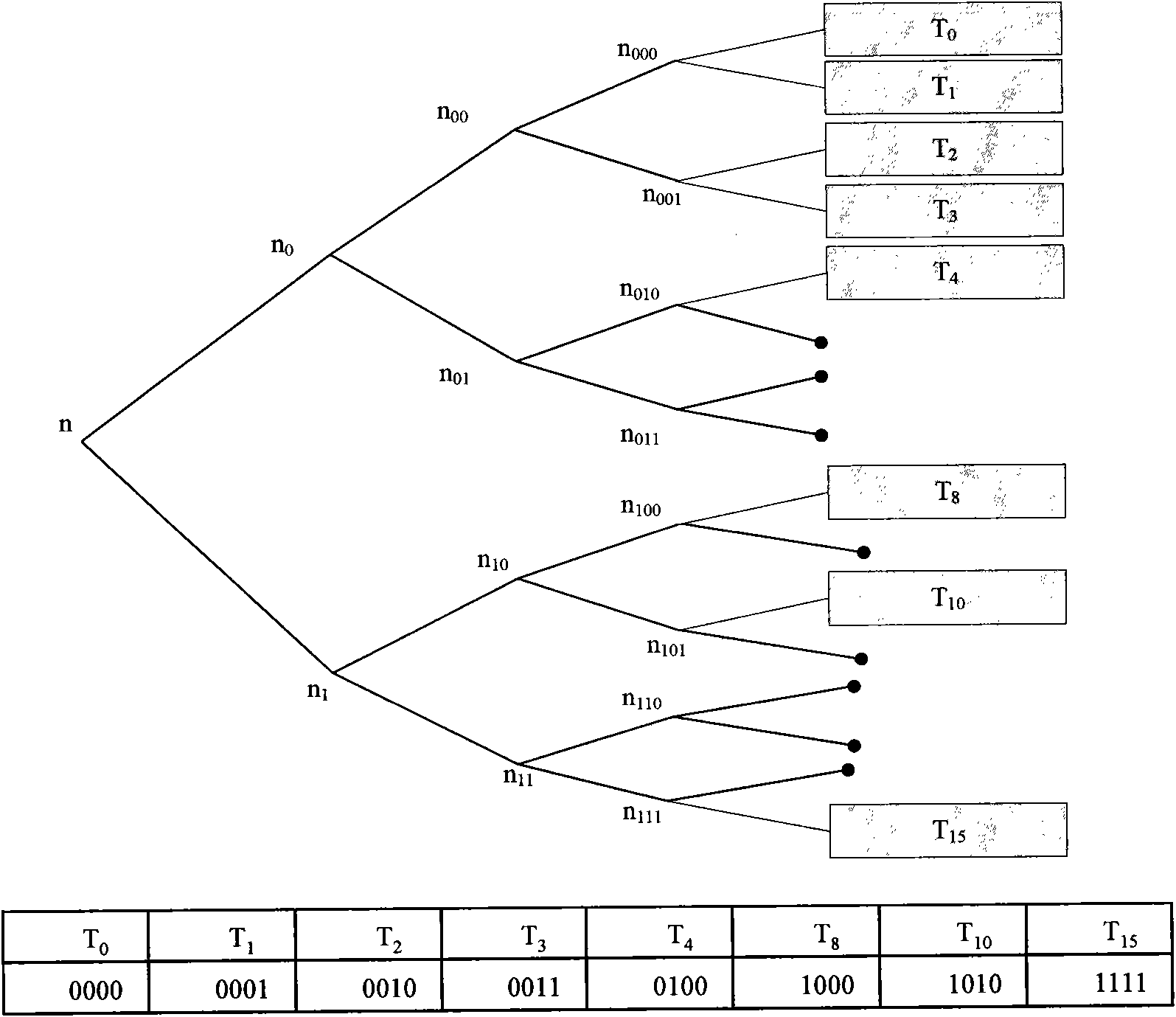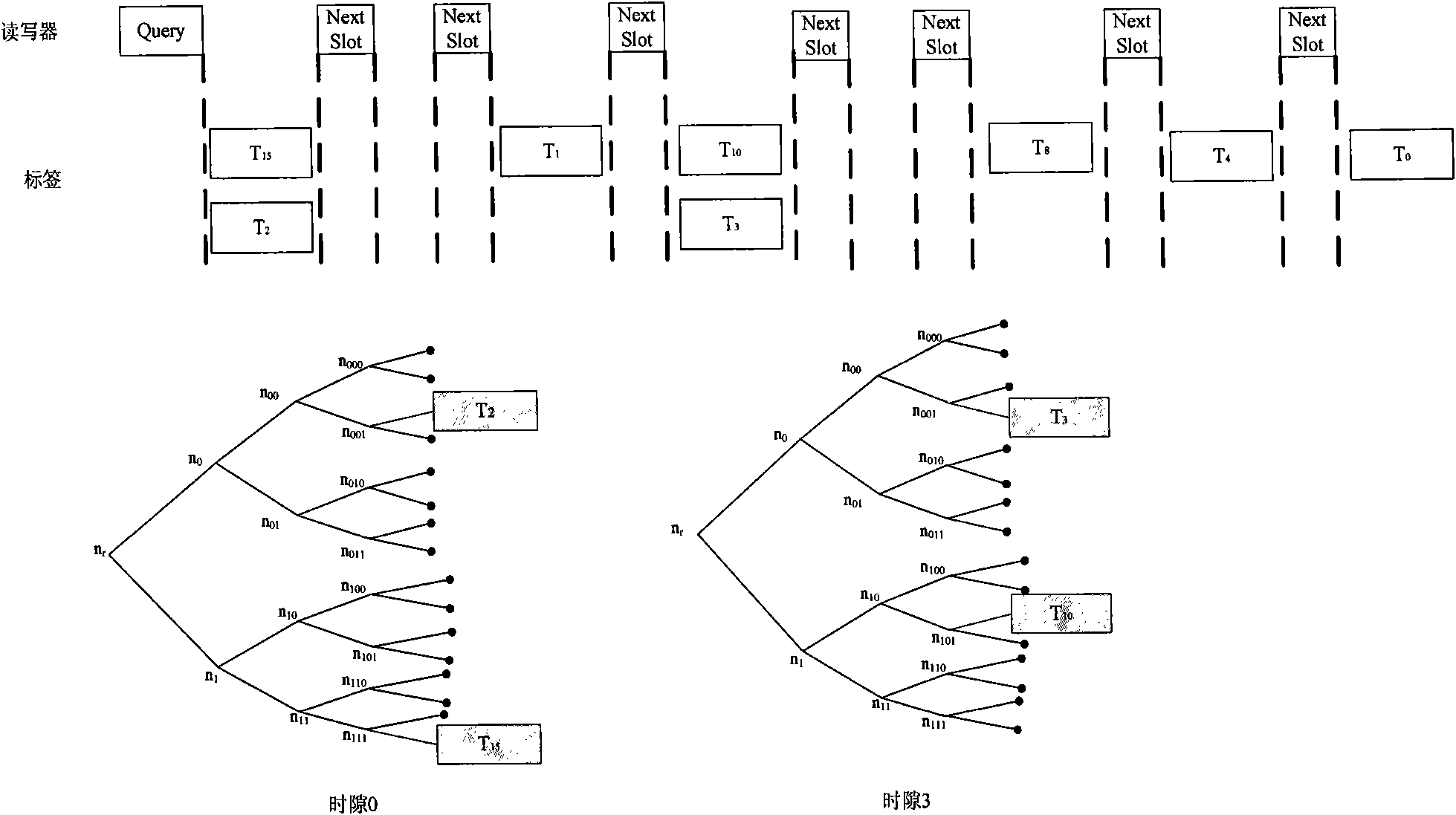High-efficiency multi-tag anti-collision radio frequency identification (RFID) method
An identification method and multi-label technology, applied in the field of collision avoidance, can solve problems such as danger, label information leakage, dependence, etc., to achieve the effect of strengthening information security, improving identification efficiency, and reducing the number of collisions
- Summary
- Abstract
- Description
- Claims
- Application Information
AI Technical Summary
Problems solved by technology
Method used
Image
Examples
Embodiment Construction
[0025] The present invention will be described in detail below through preferred embodiments in conjunction with the accompanying drawings, but this does not constitute a limitation to the present invention.
[0026] One, working principle of the present invention
[0027] In the RFID multi-tag identification process, the exact symbol position where multiple tag response information collides can be identified by selecting an appropriate encoding method for the data transmission from the tag to the reader. Manchester encoding can satisfy such conditions. Such as figure 2 As shown, Manchester encoding uses a level change (rising / falling edge) within a bit window to represent a certain bit. When the data bits sent by multiple tags at the same time have different values, the received rising and falling edges cancel each other out, so that there is "no change" within a certain bit window, so the exact location of the conflict can be identified in this way. In the embodiment of t...
PUM
 Login to View More
Login to View More Abstract
Description
Claims
Application Information
 Login to View More
Login to View More - R&D
- Intellectual Property
- Life Sciences
- Materials
- Tech Scout
- Unparalleled Data Quality
- Higher Quality Content
- 60% Fewer Hallucinations
Browse by: Latest US Patents, China's latest patents, Technical Efficacy Thesaurus, Application Domain, Technology Topic, Popular Technical Reports.
© 2025 PatSnap. All rights reserved.Legal|Privacy policy|Modern Slavery Act Transparency Statement|Sitemap|About US| Contact US: help@patsnap.com



